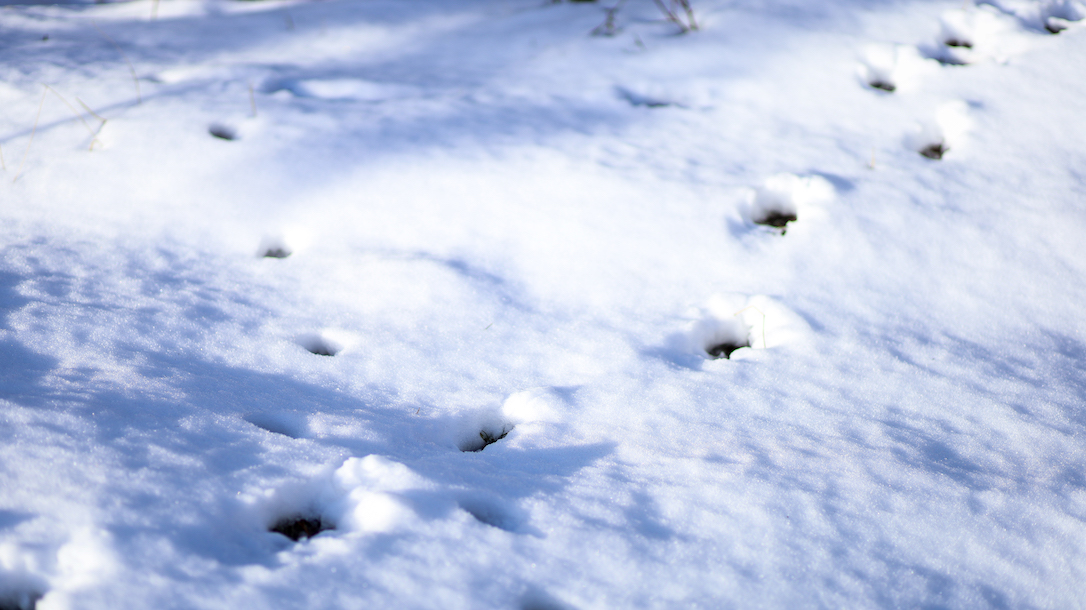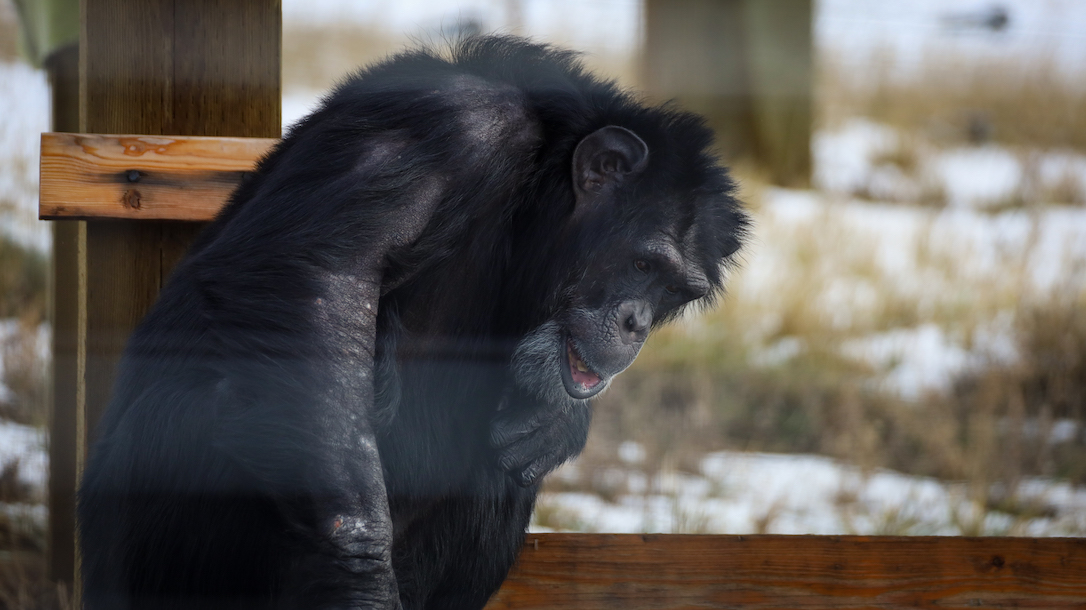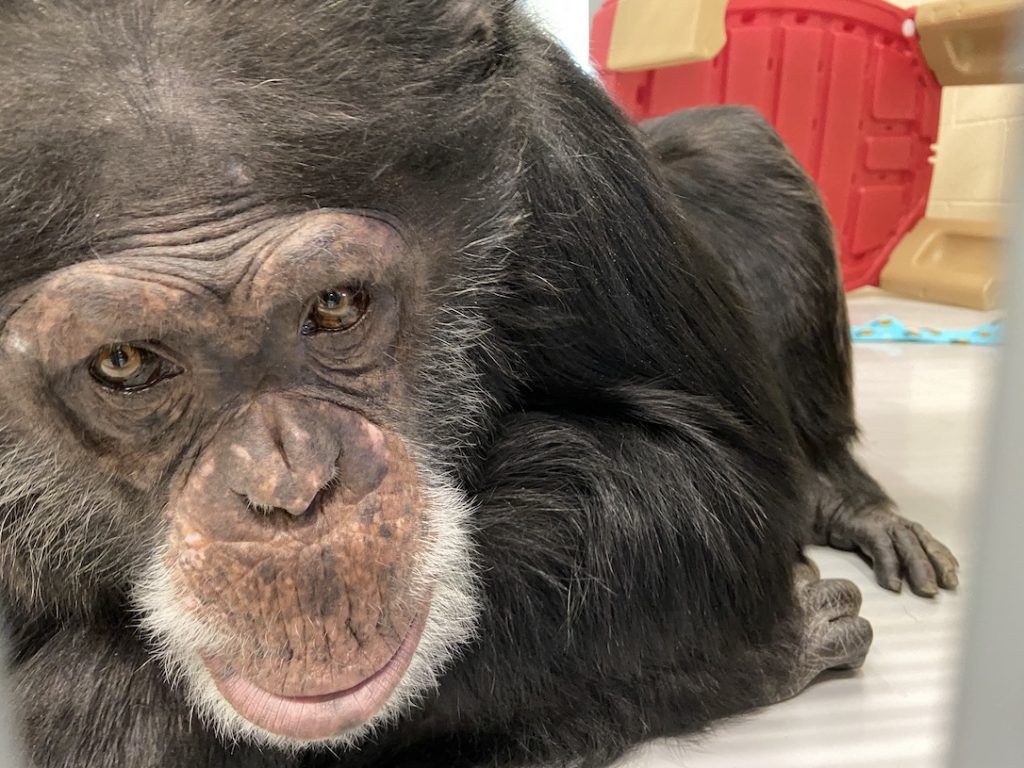The chimps did some phenomenally interesting things today. Unfortunately, these moments rarely overlapped with the times when I had the camera nearby.
As lunch passed and the afternoon rolled on, I needed to get some content for the blog but was still uninspired. At moments like that, I usually decide to grab the camera and take a walk.
Over the past week or so, the sanctuary has received a lot of snow. However, the weekend’s medley of rain, sunshine and freezing temperatures quickly converted the snow into a patchwork mosaic of slush, mud and ice. The surface provided poor footing as I slogged up the hill from the Chimp House, but I soon realized it was preserving my boot prints with almost perfect detail. Sure enough, as I passed the electrified barriers of Young’s Hill and crossed into the cattle pasture, I began to see tracks left behind by all sorts of critters. There were countless rodent trails furrowing their way through the grassy fence-lines, but I was distracted by the signs of larger animals.
The bobcat prints were easily noticeable and went just about everywhere. Katelyn also saw some bobcat tracks while patrolling a couple of weeks ago. They look like a domestic cat’s paw print, but larger and awesome-r. Much like other felines, though, they slink from cover to cover while hunting and thus leave a meandering track behind them. They’re not incredibly social animals so the numerous trails were almost surely created by only one or two individuals traveling alone. (FYI, Katelyn is a better tracker than I am. I had to text her recently to confirm that I had found goose tracks in the pasture, which were way bigger than I expected them to be).
I also found some coyote prints which reflected the purposeful demeanor that is typical of wild canines. The individual who created these prints seems to have loped through in a hurry last night, surveying the landscape with its ears, eyes and nose without breaking stride. Although roughly equal in size to the paws of an average domestic dog, the coyote prints are easily distinguished by their overall shape and the negative space between the toe pads. Also, unlike dogs, coyotes don’t continuously veer off-course to investigate every last scent. The only creatures who have time for that kind of aimless curiosity are those cared for by humans.
Of course, as far as large-bodied mammals go, mule deer are responsible for 99% of our wildlife encounters at the sanctuary. Their tracks were also ubiquitous, often crossing over the paths of other animals and obscuring their prints.
In the following image, you can see the coyote tracks going left, parallel to the creek, while the deer seemed to have gone right, trudging straight across the ravine.
Even with all of the tracks left behind by wild animals, it’s still only a “drop in the bucket” compared to all of the trodden earth left behind by the sanctuary’s cattle and the horses that live next door. You can see that the neighbor’s horses have been using the energy company’s access road quite frequently.
Of course, the walk ended with a view of the new chimp enclosures being built. The following image shows the framework of the new greenhouses and the exterior façade of the new playrooms.
One chimp who will be residing in that wing of the building, Willy B, did not leave any tracks in the snow today. Instead, he preferred to look down at the snow with what appeared to be confusion, annoyance, and/or wonder. It didn’t help that he seemed to have lost track of a walnut somewhere in the slush-covered outdoor courtyard.






















